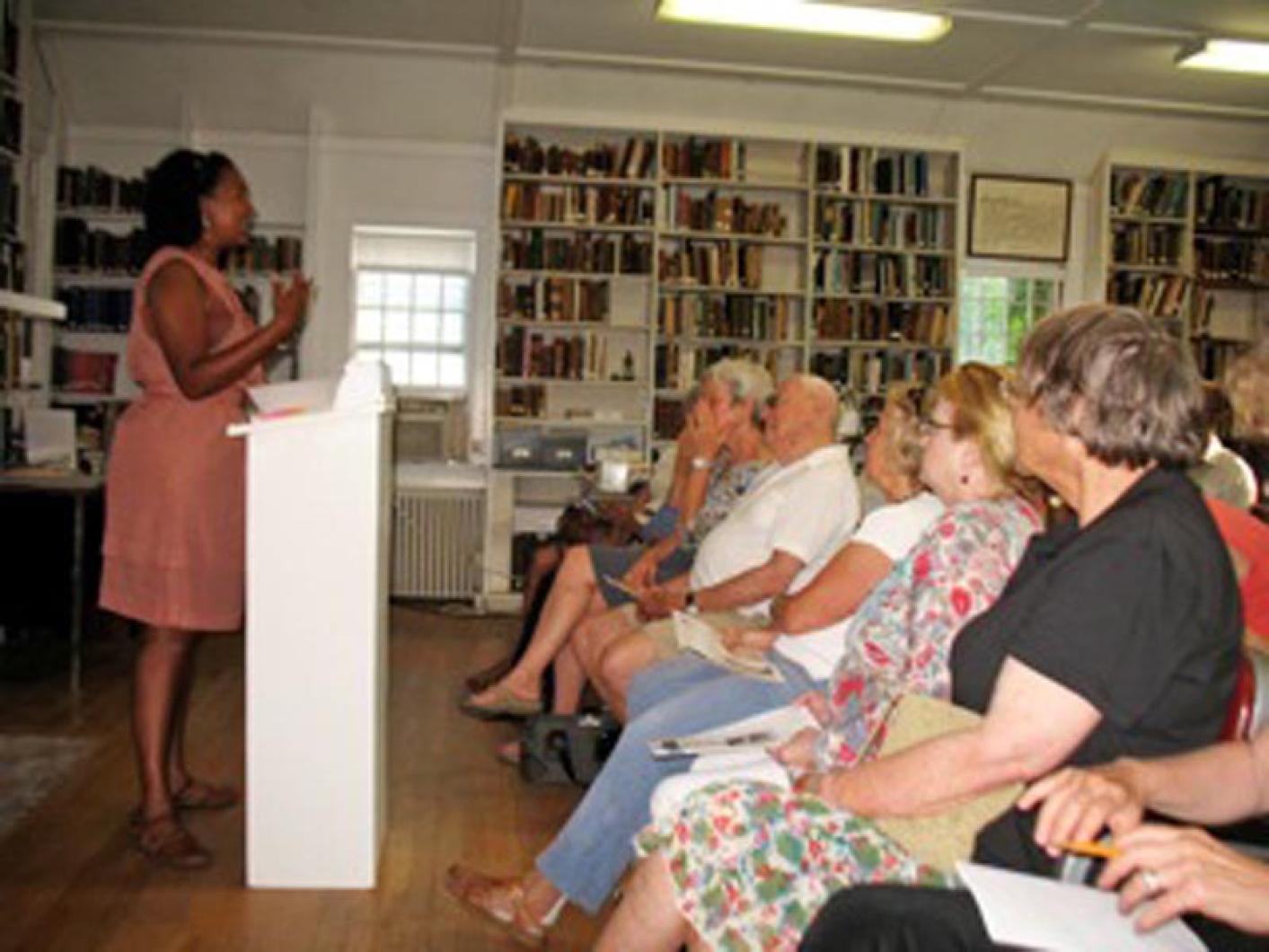Cherene Sherrard-Johnson’s biography of Oak Bluffs writer Dorothy West might never have been launched but for a startling revelation that upended the researcher’s corner of the literary world.
Ms. Sherrard-Johnson, an English professor at the University of Wisconsin-Madison, described to an Island audience Thursday how Dorothy West’s Paradise: A Biography of Class and Color emerged from the ashes of her work on a 19th century female writer who was considered part of the black literary canon.
In 2005, as Ms. Sherrard-Johnson was immersed in a project on the novelist Emma Dunham Kelley-Hawkins, a graduate student at Brandeis revealed the writer was not African American after all, but white.
Ms. Sherrard-Johnson was still stunned by the news when she quite literally found herself on Dorothy West avenue in Oak Bluffs, home to the late Ms. West, a novelist, Harlem Renaissance figure and longtime columnist for the Vineyard Gazette. She realized she had been in “the right place for the wrong author,” she said in a talk Thursday night at the Martha’s Vineyard Museum. Ms. Sherrard-Johnson described how her subsequent research revealed how race, class and place were threaded throughout the fabric of Ms. West’s life.
Ms. Sherrard-Johnson, like was Ms. West, is an only child, African American and a woman “acutely sensitive” to divisions of color, class and gender. During her research, she walked among the cottages of Oak Bluffs, read stacks of Ms. West’s newspaper columns and listened to hours of her interviews, many of them collected at the museum.
The word “paradise” in the book’s title is not meant quite literally, the author said. In a sense, Ms. West’s journey symbolized the search by many African Americans for their own place, she said, and the resulting tension between dreams and reality.
She described three periods — or places, really — that might be viewed as paradises of a sort in Ms. West’s life: The Harlem Renaissance in the early 20th century, a Mecca for black artists and writers; the Soviet Union of the early 1930s, viewed wistfully by many on the left before the crushing horrors of Stalinism were widely known; and, of course, Martha’s Vineyard, a refuge for African Americans, including Ms. West, but not without its contradictions and complexities.
Ms. West, Langston Hughes and other black artists were invited to the Soviet Union to make a film on race called Black and White. The project quickly unraveled as the Americans were neither actors nor the revolutionary sharecroppers the Soviets imagined; they were upper middle class, educated blacks. While the film was doomed from the start, Ms. West spent another year there, and enjoyed an important period of creative and sexual exploration, Ms. Sherrard-Johnson said.
“All of a sudden, they were free of these inhibitions they had in the U.S.,” she told the audience.
An important resource was Ms. West’s Vineyard Gazette column, which she wrote from 1967 until her death in 1998. Cottagers’ Corner was not just the column’s name for some years, but referred to a place of pride, specifically the Oak Bluffs home of The Cottagers, a pioneering African American women’s group.
Before taking questions and signing copies of her book (issued this year in paperback by Rutgers University Press), Ms. Sherrard-Johnson read a portion of the book’s coda, which envisions Ms. West walking through Oak Bluffs, from Inkwell beach to Circuit avenue, greeting friends along the way.
Later, she writes: “Dorothy West’s paradise may not be a utopia, but the desire for utopia should not be so easily dismissed . . .”







Comments
Comment policy »